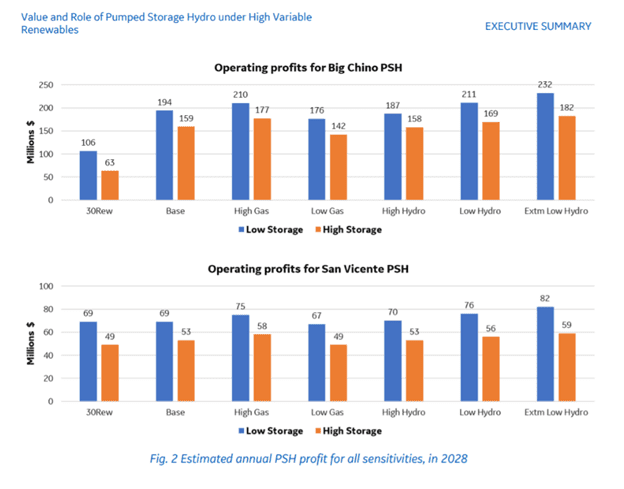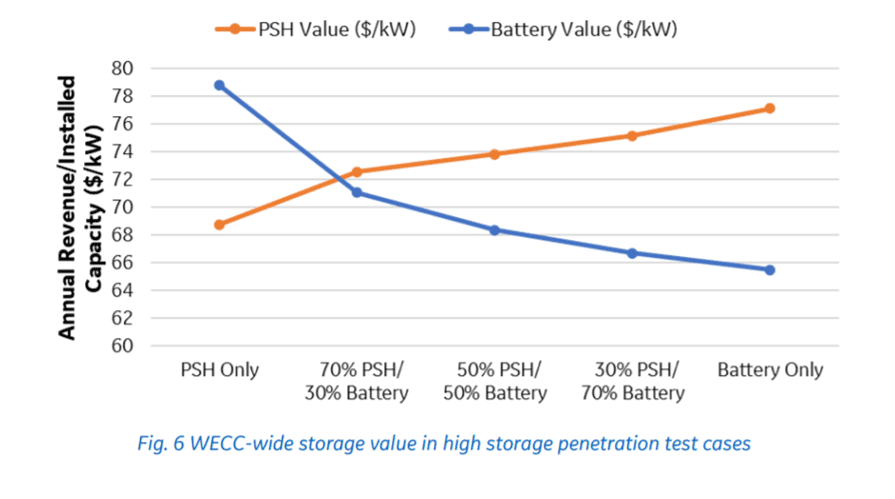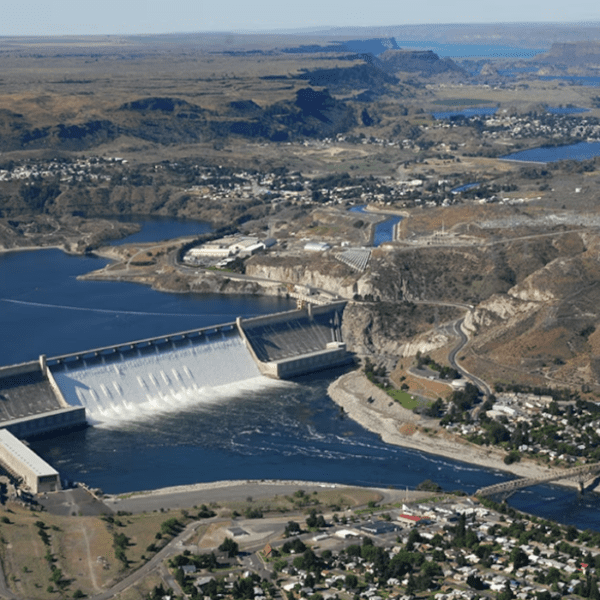Considered a large-scale water battery, pumped storage hydropower is poised to play an important role in the clean energy transition. Already, existing fixed-speed pumped storage hydro represents 93% of all grid-scale storage in the U.S. These facilities are already shifting operations to better accommodate wind and solar.
Most of the 55 GW of new pumped storage hydro projects in development will utilize variable speed turbines, meaning they can shift speeds in pumping and generating mode, offering lots more value to a zero-carbon grid that will be starved for stability.
- But exactly how much value can variable speed pumped storage hydro provide under many grid scenarios?
- Where do the value streams come from? And what factors could affect this value?
To answer these questions, I turned to the results of a recent study, commissioned by the U.S. Department of Energy and conducted by GE. The researchers used two case studies to examine these questions and puts some analytical rigor behind the claim that pumped storage hydropower will be highly valuable in a low-carbon grid.
Released in October 2021 at the Clean Currents Conference + Tradeshow, the report, Value and Role of Pumped Storage Hydro Under High Variable Renewables, paints a convincing picture of pumped storage hydro’s future. The report focuses on two proposed projects in the western interconnect: Big Chino, a 2,000-MW closed-loop project outside of Phoenix and San Vicente, a 500-MW project outside of San Diego.
The GE team modeled WECC, the western grid, under various renewable and storage deployments in the year 2028.
What’s the Value of these Two Projects to the Western Grid?
Using an innovative price maker model rather than a less rigorous price taker model (these plants are large so their participation in the market alone will shift pricing), the GE team found that the plants reduced production costs by $244 million.
Under this base case of 50% renewables, and lower battery buildout, CO2 emissions were reduced by over 2 million tons in addition to lowering curtailments of wind and solar as well as reduced cycling from the thermal plants.
Where Do the Value Streams Come From?
While the system benefit of pumped storage hydro under a 50% renewable case is clear (see above), what does this mean in dollar and cents for the developers?
Figure 2 from the report shows the various operating profits for both Big Chino and San Vicente in the year 2028. Most of the revenue comes from the energy market (Arizona and California don’t have central capacity markets) followed by operating reserves and then spinning reserve revenues.

Profits are largest in low hydro years and are lowest in lower renewable buildout scenarios coupled with wet hydro years. In all cases, developers will experience lower profits in high battery storage scenarios and higher profits in scenarios assuming lower battery buildouts. (See Figure 6 from the report.)

What Factors Most Affect the Value of Pumped Storage Hydro?
In an interesting finding, the GE team concluded that pumped storage hydro is not competing against shorter duration batteries. Instead, the largest competitor for pumped storage hydro is … more pumped storage.
Obviously, this might change if one of the emerging (but not yet commercial) technologies for longer duration storage becomes cost effective. However, GE found that the two largest variables affecting pumped storage hydro value are renewable penetration (the larger the share of renewables, the greater the pumped storage hydro value) and the volume of total energy storage (meaning other long duration technologies).
Worth the Read
There is LOT more great analysis in this report, Value and Role of Pumped Storage Hydro Under High Variable Renewables including a new scheduling tool for variable speed pumped storage hydropower.
It’s worth a read.











